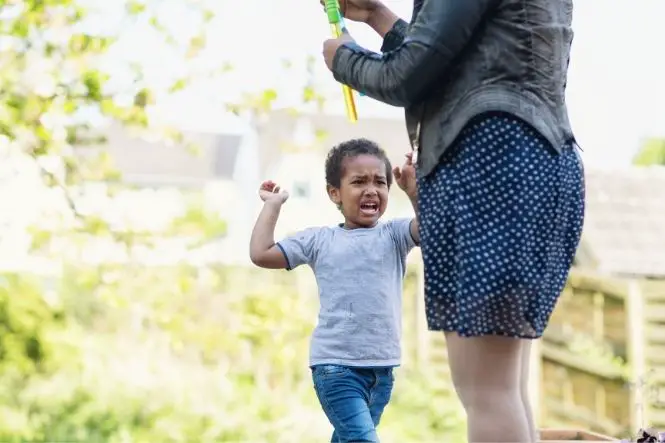Head banging or a child’s repeated action of banging his/her head (usually against a wall) may be hard for parents to watch, but children often engage in this behaviour to bring themselves comfort and even relief. Most children who engage in head banging do so starting at around six months of age and outgrow the behaviour by their third birthdays. While it may be hard, parents should attempt to understand this behaviour and keep their child safe for as long as (s)he decides to continue it.
Understanding Head Banging
Children often fall into head banging as a method of soothing themselves, providing pain relief or expressing frustration. Many children bang their heads in a rhythm that they find soothing and indeed some children do this at bedtime to help themselves fall asleep. Other children do not engage in head banging routinely but do return to this behaviour when they are experiencing pain such as from teething or ear infections. Experts theorise that this may be because the head banging is a distraction from these pains and again the rhythmic motion could be soothing. Finally, children may engage in head banging because they are frustrated and unable to explain or even verbalise these emotions. Instead, these children bang their heads as a way of physically working through their feelings.
Heading Banging and Developmental Disorders
Head banging is a sign of some developmental disorders such as Autism, but it is not the only sign of a developmental disorder. If a child bangs his/her head but does not exhibit any other warning signs then there is usually little cause to worry. However, if a parent is concerned about a child’s development and observes repeated head banging then it would be wise to contact a GP, educational or child mental health professional for further information and/or observation and diagnosis.
Keeping Children Safe During Head Banging
Most children who engage in head banging do not do so with the intention of hurting themselves, but parents must remain vigilant about their child’s safety anyway. Parents of children who engage in head banging while in their cribs or playpens should check that the motion has not loosened any of the pieces nor that there are screws or other bits that could present a hazard to the child. It might also be possible to drape “bumpers” or soft linens on the sides of a crib or playpen to reduce the impact (and noise) of head banging on this equipment. Parents of children who engage in head banging on household walls should make sure that children are well away from stairs, that there are no decorative items that could fall on the child and that the wall is not weak enough to be injured nor strong enough (such as solid concrete) to injure the child. If such is the case, parents should consider gating entrances to these areas in order to keep children from injuring themselves.
Head banging is a behaviour that generally starts at around six months of age and tends to naturally end by about three years of age. Children may engage in head banging for a variety of reasons, including as a means of soothing themselves, relieving pain or expressing frustration, though it may also be an indicator of a developmental disorder if accompanied by other signs. Parents who are concerned about their child’s head banging should consult their GP for further information.


